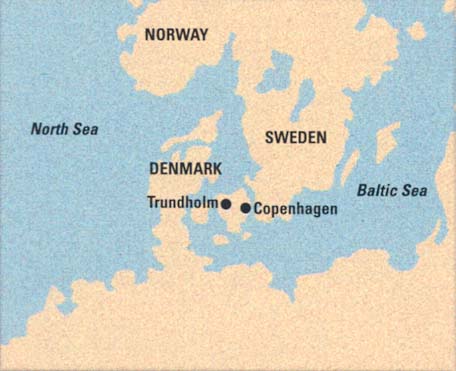
Sleek as a greyhound, a diminutive horse pulls a bronze disk covered with gold, on this elegant chariot. Behind the gold disk is a second disk, obscured in this view, made simply of bronze. Each leg of the horse is supported by a wheel, as is each disk. Found on the island of Zealand, in modern Denmark, the work dates to the 14th century B.C. At 24 inches long, it is the largest metal sculpture unearthed from the North European Bronze Age.

Art historians suggest the gold-covered disk represents the day and the bronze disk symbolizes night; the sculpture has therefore been named the Chariot of the Sun. The imagery calls to mind various ancient traditions that associated the sun with gods. Helios, the Greek sun-god, was depicted driving a four-horse chariot (a quadriga) through the daytime sky. Strangely, the pagan Helios with his quadriga is portrayed in several Byzantine period synagogues. In the Bible, King Josiah of Judah is said to have “removed the horses that the kings of Judah had dedicated to the sun, at the entrance to the house of the Lord [the Jerusalem Temple] … and he burned the chariots of the sun with fire” (2 Kings 23:11). Excavators at Taanach, in Israel, have uncovered a tenth-century B.C. cult stand bearing the image of a horse with a blazing sun-disk resting on its back.
Already a library member? Log in here.
Institution user? Log in with your IP address.

